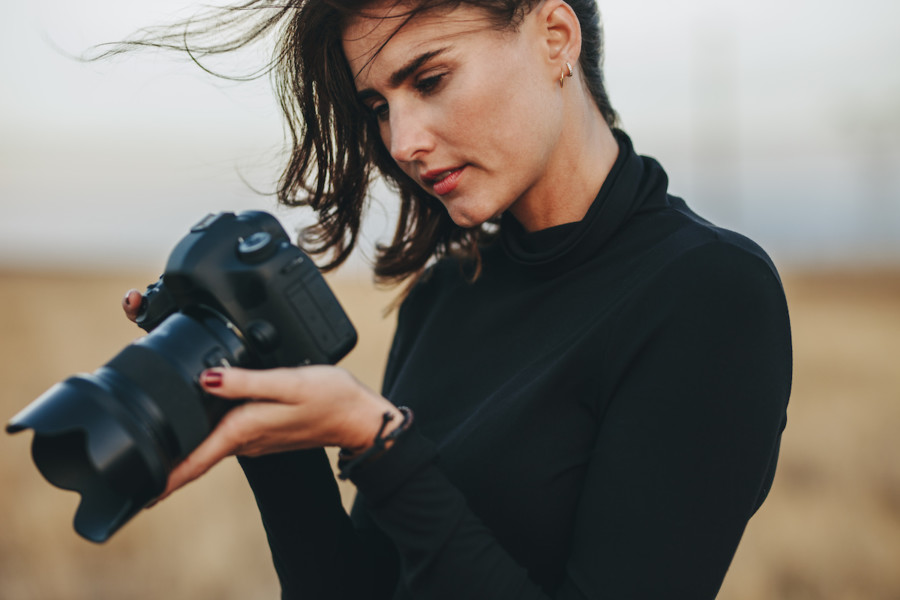Share
Pride: Why Representation Matters for LGBTQIA+ Photographers Well Beyond June
Representation. What does it mean? Why does it matter? For many people, representation doesn’t just mean there’s a seat at the table with their...

Representation. What does it mean? Why does it matter?
For many people, representation doesn’t just mean there’s a seat at the table with their name on it. It means a table was built with them in mind. But let’s not talk in metaphors…
As conversations about humans rights and legislation surrounding gender and sexual orientation are, to this day, still in flux around the world, representation for the LGBTQIA+ community remains paramount. But they shouldn’t begin and end during Pride Month. They should be happening year-round.
With that in mind, let’s broaden how stories are told visually. Who are the LGBTQIA+ photographers pushing the boundaries of our current understanding of representation?
To continue Pride Month’s momentum, we connected with a few photographers on Instagram to highlight their work and share their feelings about representation. Follow these photographers, scroll on to see more of their work and read some of their thoughts on representation in the photo industry. We’re committed to highlighting these creatives now, in honor of Pride Month, AND well beyond the month of June.
Texas Isaiah
Representation politics don’t fully guarantee or serve the material conditions needed in communities that the state has marginalized. I want more abundant opportunities for Black visual narrators, especially those within the trans, non-binary, and gender-expansive spectrum. It’s essential to create nourishing spaces for individuals to practice self-actualization regardless of their status as beginners or more seasoned creators, both within and outside of the industry.
Jamie Thrower
Amanda Picotte
Representation to me means that queer people, and especially queer people of color, are hired to tell their stories all year round, not just during Pride month. Hire queer talent to do more than tell queer stories too, our perspectives are valuable when applied to all aspects of society. I’d like to see more queer people in positions of power in the photo industry, not just in freelance roles. That would look like representation to me!
Michelle Groskopf
Kate Warren
True representation means LGBTQIA+ experiences no longer being invisible. I didn’t have bisexual female role models or mentors in the industry because I couldn’t find them – not one. You can’t be what you can’t see. I have to work hard to build community with fellow queer women in the industry, but it’s my hope that by doing that I open doors for queer womxn coming up behind me to feel more free. Representation means our own experiences being visible and reflected in the people who come before us – it validates who we are and lets us know spaces are safe. Having true representation means advertisers, brands, publications, and other forms of mainstream media being inclusive of queer stories told by members of the community itself all year, not just during Pride. By normalizing queer experiences, our world becomes safer for all queer people.
Kelly Balch
Sasha Tivetsky
It’s a proven fact that the camera is a tool for exploration. Sometimes I feel like a pirate at the top of a ship’s hull looking out for land or other signs.
A camera is a looking glass that lets you freeze what you see in that moment. What you see in that moment is your own personal perspective and the moment that you choose to keep says everything about you. That choice is an instinct comprised of everything you have lived until that point, your curiously, your fears, dreams and daily thoughts, the camera gives you a chance to hone in, to focus and dive deep; to bring ideas to light, to express something in a universal language.
In this sense, the queer photographer is vital. Aside from being able to visually express our ideas, photography is a tool through which, as a community, we can show the struggles we are having or share in the joys we find. To me, being a queer photographer isn’t limited to photographing queer people and it has frustrated me that this is a pigeonhole we often face as queer photographers.
Part 3: In my life and in my project Grandma Luda, photography has served as a shield, a magnifying glass and as a sifter that teaches me what’s important.
As a lesbian and queer photographer, what’s most important to me is someone relating deeply to my work. Whether it’s someone who is also struggling for acceptance from their family or even some one who is attracted to my work because it reminds them of a piece from their life, queer or not. My grandmother hates that I’m a lesbian, yet we still manage to communicate and do what we can for one another.
Me showing up with a camera and intent has made a huge difference in our relationship. I’m on this ship’s hull, a badass lesbian pirate, with my looking glass just sharing insights with everyone who’s on deck.
We want to know what representation means to you. How do you plan to show up and support the LGBTQIA+ community after this Pride Month comes to an end? Who are the LGBTQIA+ photographers you love to follow on social media? Tag us on Twitter or Instagram (@photoshelter) to let us know, or comment below.


